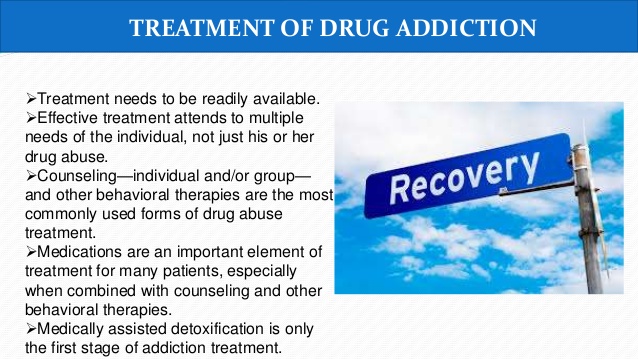Others might require minimal psychological healthcare but require some form of ongoing official substance abuse treatment. For individuals with SMI, continued treatment often is necessitated; a treatment program can provide these customers with structure and varied services not generally available from mutual self-help groups. Upon leaving a program, clients with COD always should be motivated to return if they require help with either disorder.
Routine informal check-ins https://transformationstreatment1.blogspot.com/2020/07/depression-mood-disorders-delray-beach.html with customers likewise can assist ease potential issues prior to they end up being major enough to threaten recovery. A good continuing care strategy will include actions for when and how to reconnect with services. The plan and arrangement of these services likewise makes readmission much easier for clients with COD who require to come back.
Significantly, drug abuse programs are undertaking follow-up contact and regular groups to keep track of customer progress and assess the need for further service. This section focuses on two existing outpatient designs, ACT and ICM (both from the mental health field) and the obstacles of employing them in the compound abuse field.
Facts About Why Addiction Treatment Doesnt Have Licence Medical Provider Revealed
Due to the fact that service systems are layered and challenging to negotiate, and since people with COD require a large range of services but frequently lack the understanding and capability to access them, the utility of case management is recognized extensively for this population. Although ACT and ICM can be considered similar in numerous functions (e.

Therefore, each is described independently listed below. Established in the 1970s by Stein and Test (Stein and Test 1980; Test 1992) in Madison, Wisconsin, for customers with SMI, the ACT design was created as an extensive, long-term service for those who were reluctant to participate in traditional treatment approaches and who needed significant outreach and engagement activities.
1998a ; Stein and Santos 1998). ACT programs usually employ intensive outreach activities, active and continued engagement with clients, and a high strength of services. ACT highlights shared decision making with the customer as necessary to the client's engagement procedure (Mueser et al. 1998). Multidisciplinary teams consisting of professionals in essential areas of treatment provide a series of services to clients.
The smart Trick of How To Deliver Addiction Treatment To Illiterate Low Iq Clients That Nobody is Talking About
The ACT team offers the client with practical support in life management as well as direct treatment, typically within the client's house environment, and remains accountable and available 24 hr a day (Test 1992). The group has the capacity to heighten services as required and might make numerous check outs each week (or even daily) to a client.
Team cohesion and smooth working are vital to success. The ACT multidisciplinary team has shared responsibility for the whole defined caseload of clients and satisfies frequently (preferably, groups meet everyday) to guarantee that all members are fully up-to-date on clinical issues. While team members may play various roles, all recognize with every client on the caseload.
Examples of ACT interventions consist of Outreach/engagement. To involve and sustain customers in treatment, therapists and administrators must establish multiple methods of attracting, engaging, and re-engaging customers. Frequently the expectations put on customers are very little to nonexistent, specifically in those programs serving very resistant or hard-to-reach clients. Practical support in life management.
How Much Did The Addiction Treatment Industry Spend In Google Adwords In 2016 Things To Know Before You Buy
While the function of a counselor in the ACT technique includes basic counseling, in numerous instances substantial time likewise is invested on life management and behavioral management matters. Close tracking. For some customers, especially those with SMI, close tracking is required (what is the first step toward getting treatment for alcohol addiction?). This can consist of (Drake et al. 1993): Medication guidance and/or managementProtective (agent) payeeshipsUrine drug screens Counseling.
Crisis intervention. This is offered during extended service hours (24 hr a day, preferably through a system of on-call rotation). 1. Providers supplied in the neighborhood, most regularly in the customer's living environment2. Assertive engagement with active outreach3. High intensity of services4. Small caseloads5. Continuous 24-hour responsibility6. Team approach (the complete team takes responsibility for all clients on the caseload) 7.

Close work with support systems9. Connection of staffingWhen working with a customer who has COD, the goals of the ACT model are to engage the customer in an assisting relationship, to help in meeting basic needs (e. g., housing), to support the client in the neighborhood, and to supply direct and integrated drug abuse treatment and mental health services.
What Is Used For The Treatment Of Heroin Addiction? - Truths
The crucial components in this development have beenThe use of direct drug abuse treatment interventions for customers with COD (typically through the addition of a drug abuse treatment counselor on the multidisciplinary group) Modifications of conventional psychological health interventions, consisting of a strong focus on the relationships in between psychological health and compound usage issues (e.
Therapeutic interventions are customized to meet the client's current stage of change and receptivity. When customized as described above to serve customers with COD, the ACT design is capable of consisting of customers with greater mental and functional disabilities who do not fit well into numerous conventional treatment techniques. The characteristics of those served by ACT programs for COD consist of those with a compound usage condition andSignificant mental disordersSerious and consistent mental illnessSerious practical impairmentsWho prevented or did not respond well to standard outpatient mental health services and substance abuse treatmentCo-occurring homelessnessIn addition to, and possibly as a repercussion of, the qualities cited above, clients targeted for ACT frequently are high utilizers of costly service shipment systems (emergency clinic and medical facilities) as instant resources for psychological health and drug abuse services.
The basic consensus of research to date is that the ACT design for psychological disorders works in lowering medical facility recidivism and, less consistently, in enhancing other customer outcomes (Drake et al. what is the treatment for sexual addiction. 1998a ; Wingerson and Ries 1999). Randomized trials comparing clients with COD designated to ACT programs with comparable customers appointed to standard case management programs have actually demonstrated much better results for ACT.
The Basic Principles Of Examples Of How To Write Addiction Impact Letter For Family Member In Treatment
1998a ; Morse et al. 1997; Wingerson and Ries 1999). It is essential to note that ACT has actually not been effective in minimizing compound use when the compound use services were brokered to other providers and not offered straight by the ACT team (Morse et al. 1997). Scientists likewise thought about the cost-effectiveness of these interventions, concluding that ACT has much better client outcomes at no higher cost and is, therefore, more cost-efficient than brokered case management (Wolff et al.
Other studies of ACT were less constant in demonstrating enhancement of ACT over other interventions (e. g., Lehman et al. 1998). In addition, the 1998 study mentioned formerly (Drake et al. 1998b ) did not show differential enhancement on several procedures important for developing the efficiency of ACT with CODthat is, retention in treatment, self-report steps of substance abuse, and steady housing (although both groups enhanced).
More analyses indicated that customers in high-fidelity ACT programs showed greater decreases in alcohol and drug use and obtained greater rates of remissions in substance use disorders than clients in low-fidelity programs (McHugo et al. 1999). Nonetheless, ACT is a recommended treatment design for customers with COD, particularly those with major mental illness, based upon the weight of proof.
The Ultimate Guide To Medically Assisted Treatment For What Type Of Drug Addiction
Usage active and continued engagement techniques with clients. Utilize a multidisciplinary group with proficiency in compound abuse treatment and mental health. Provide practical support in life management (e. g., real estate), as well as direct treatment. Stress shared decisionmaking with the client. Supply close keeping an eye on (e. g., medication management). Preserve the capacity to intensify services as required (consisting of 24-hour on-call, numerous visits per week).